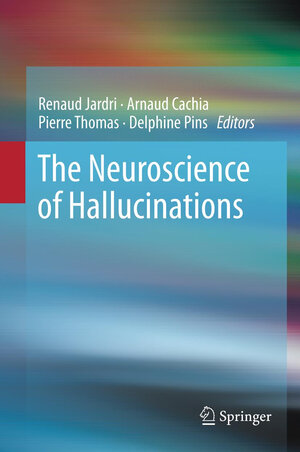
“Psychiatrists, neurologists, neuropsychologists, cognitive neuroscientists, clinical psychologists and pharmacologists will welcome The Neuroscience of Hallucinations as a vital guide to the current state and promising future of their shared field. All researchers who are interested in the brain and behavior will expand their knowledge base reading this superb book. Neuroscience of Hallucinations represents an excellent, unique book, which is a real treat for all experts frm the field of neuroscience, clinicians as well as basic scientists.” (Prof. Dalibor Karlović, Alcoholism and Psychiatry Research, Vol. 51 (2), 2015)
“This volume provides a unique, comprehensive, multifaceted perspective on hallucinations. The editors have brought together an international cast of authors to provide 27 chapters, organized into 5 parts. … Cliniciansmay particularly enjoy learning more about the assessment of hallucinations. … The Neuroscience of Hallucinations provides a welcome and valuable collection of works on hallucinatory experience that is unprecedented in its scope.” (Robert M. Bilder, Archives of Clinical Neuropsychology, Vol. 26 (5), August, 2013)
“This superb book summarizes the state of neuroscience of the fascinating phenomenon of hallucinations. … this is a welcome addition to psychiatry and clinical neuroscience. … the editors and chapter authors have produced a brilliant review of the latest research in this burgeoning area. … psychiatrists, psychologists, neuroscientists, and graduate students would benefit from this timely and comprehensive review. … All researchers who are interested in the brain and behavior will expand their knowledge base reading this superb book.” (Michael Joel Schrift, Doody’s Book Reviews, May, 2013)
The Neuroscience of Hallucinations
herausgegeben von Renaud Jardri, Arnaud Cachia, Pierre Thomas und Delphine PinsThe Neuroscience of Hallucinations synthesizes the most up-to-date findings on these intriguing auditory, visual, olfactory, gustatory, and somatosensory experiences, from their molecular origins to their cognitive expression. In recognition of the wide audience for this information among the neuroscientific, medical, and psychology communities, its editors bring a mature evidence base to highly subjective experience. This knowledge is presented in comprehensive detail as leading researchers across the disciplines ground readers in the basics, offer current cognitive, neurobiological, and computational models of hallucinations, analyze the latest neuroimaging technologies, and discuss emerging interventions, including neuromodulation therapies, new antipsychotic drugs, and integrative programs. Among the topics covered:
Psychiatrists, neurologists, neuropsychologists, cognitive neuroscientists, clinical psychologists, and pharmacologists will welcome The Neuroscience of Hallucinations as a vital guide to the current state and promising future of their shared field.



